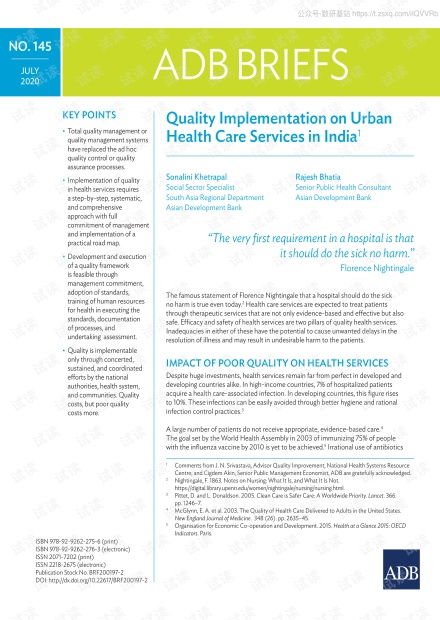您所在的位置:首页 - 百科 - 正文百科
健康经营英文缩写
![]() 付辰
2024-05-03
【百科】
819人已围观
付辰
2024-05-03
【百科】
819人已围观
摘要**Title:ManagingHealth:CommonAbbreviationsandAcronyms**Intherealmofhealthmanagement,variousabbreviat
Title: Managing Health: Common Abbreviations and Acronyms
In the realm of health management, various abbreviations and acronyms are commonly used to denote key concepts, organizations, processes, and regulations. Understanding these abbreviations is crucial for effective communication and decisionmaking within the healthcare industry. Below are some of the most frequently encountered abbreviations and acronyms:
1. HMO Health Maintenance Organization
Definition: A type of managed care organization that provides health care coverage through a network of hospitals, physicians, and other healthcare providers.
Example: Kaiser Permanente is a wellknown HMO in the United States.
2. PPO Preferred Provider Organization
Definition: A type of health plan that contracts with medical providers, such as hospitals and doctors, to create a network of participating providers.
Example: Blue Cross Blue Shield offers PPO plans to its members.
3. ACA Affordable Care Act
Definition: A comprehensive healthcare reform law enacted in 2010 in the United States, aimed at increasing the quality and affordability of health insurance.
Example: The ACA requires most Americans to have health insurance coverage or face penalties.
4. HIPAA Health Insurance Portability and Accountability Act
Definition: Legislation that provides data privacy and security provisions for safeguarding medical information.
Example: Healthcare providers must comply with HIPAA regulations to protect patient confidentiality.
5. EMR Electronic Medical Record
Definition: Digital versions of patients' paper charts, containing medical history, diagnoses, medications, treatment plans, immunization dates, allergies, radiology images, and laboratory test results.
Example: Hospitals and clinics use EMR systems to streamline patient care and documentation.
6. EHR Electronic Health Record
Definition: Similar to EMRs, but EHRs go beyond the data collected in the provider’s office and include a more comprehensive patient history.
Example: EHRs allow for the sharing of patient information among healthcare providers securely.
7. CMS Centers for Medicare & Medicaid Services

Definition: A federal agency within the United States Department of Health and Human Services responsible for administering Medicare, Medicaid, and the Children's Health Insurance Program (CHIP).
Example: CMS sets standards for healthcare providers participating in Medicare and Medicaid programs.
8. FDA Food and Drug Administration
Definition: A federal agency of the United States Department of Health and Human Services responsible for protecting and promoting public health by controlling and supervising food safety, tobacco products, dietary supplements, prescription and overthecounter pharmaceutical drugs, vaccines, biopharmaceuticals, blood transfusions, medical devices, electromagnetic radiation emitting devices, cosmetics, animal foods & feed and veterinary products.
Example: The FDA approves new drugs and medical devices for sale in the United States.
9. CDC Centers for Disease Control and Prevention
Definition: A national public health institute in the United States that is a federal agency under the Department of Health and Human Services.
Example: The CDC monitors and responds to infectious disease outbreaks and other health threats.
10. WHO World Health Organization
Definition: A specialized agency of the United Nations responsible for international public health.
Example: The WHO provides leadership on global health matters, shaping the health research agenda, and setting norms and standards.
11. ROI Return on Investment
Definition: A financial metric used to evaluate the efficiency or profitability of an investment, typically calculated as the ratio of net profit to the initial investment.
Example: Healthcare organizations often analyze the ROI of new medical equipment or technology implementations.
12. PDCA PlanDoCheckAct
Definition: A fourstep management method used for the control and continuous improvement of processes and products.
Example: Hospitals use the PDCA cycle to implement quality improvement initiatives and ensure patient safety.
13. ADR Adverse Drug Reaction
Definition: Any unexpected, unintended, or harmful reaction to a medication.
Example: Pharmacovigilance programs monitor and report ADRs to regulatory authorities.
14. QI Quality Improvement
Definition: Systematic efforts to improve performance and outcomes in healthcare processes, services, and patient outcomes.
Example: Healthcare organizations use quality improvement methodologies to enhance patient care and safety.
15. PHI Protected Health Information
Definition: Any information about health status, provision of healthcare, or payment for healthcare that can be linked to an individual.
Example: HIPAA regulations protect PHI from unauthorized disclosure.
Understanding these abbreviations and acronyms is essential for professionals in the healthcare industry to communicate effectively, stay compliant with regulations, and provide highquality care to patients.
Tags: 健康经营范围有哪些 健康经营英文缩写 健康经营英文缩写怎么写 健康经营英文缩写是什么
版权声明: 感谢您对【博雅常识网】网站平台的认可,无特别说明,本站所有文章均归【博雅常识网】平台所有,转载请说明文章出处“来源【博雅常识网】”。 https://boyakucun.com/post/16741.html
上一篇: 上海艺星整形美容医院怎么样
下一篇: 扶沟美容养生馆哪家好
最近发表
- 无需出国门,中国科学家助力缅甸地震救援的科技力量
- 悲剧的背后,中国留学生在大马遭遇诈骗后的悲剧性选择
- 4月追剧指南,解锁你的观影新世界
- 农行去年营收净利增速领跑同业,金融巨擘的稳健步伐
- 专家视角,缅甸地震——如巨刀切入地球的震撼瞬间
- 台湾歌手范玮琪,用歌声传递深情,唱响我爱你中国的爱国情怀
- 专家揭秘,四大行获5000亿元补充资本的金融大礼包
- 泽连斯基,不承认美援助是贷款,背后的政治与战略考量
- 幼升小与小升初,开启孩子教育旅程的黄金起点
- 面对生死存亡,胡塞武装在美重兵压境下的挑战与应对策略
- 4月新规,解锁生活与工作的新篇章
- 刀郎武汉演唱会,一曲虞美人故乡的深情演绎与文化共鸣
- 中国救援队成员的空中告别,爱与责任的交织
- 援缅与裁撤,特朗普的决策及其背后的争议
- 评论员视角,特朗普的关税政策——简单粗暴背后的复杂考量
- 失联清华毕业生罗生门,一桩未解之谜的终章
- 专家深度解析,缅甸7.9级强震的成因与影响
- 专家视角,美战略重心悄然转移——从全球干预到本土重塑
- 歼36空中放油,航空技术的新突破与未来展望
- 全国公立医疗机构即将告别门诊预交金,一场医疗服务的轻装上阵
- 房屋倒塌,无人敢进,在缅中国人的困境与希望
- 缅甸地震,为何其破坏力如此惊人?
- 萨德系统,能否应对中俄高超声速导弹的挑战?
- 宁波海事局通报两船碰撞事故,原因、影响与预防措施
- 驴肉火烧掺马肉,食品安全与诚信的警钟
- 探索繁华蓉城的新地标,深度解读成都公开赛的魅力与影响
- 为什么美国在调停俄乌冲突的同时却要攻打胡塞?
- 探索成都七中实验中学,学术殿堂与素质教育的典范
- 媒体揭秘,台独迫害无下限——台湾民众的深重苦难与国家统一的必然趋势
- 白鲸的微笑服务,一次关于动物训练与情感交流的探索
- 留学申请攻略,从梦想启航到成功落地的全指南
- 小米YU7中文名揭晓,以悦刻之名,共绘智能生活新篇章
- 探索教育部门户网站,你的在线学习导航与资源宝库
- 挺起胸膛,共筑中国梦——港澳办再转文背后的民族精神与时代担当
- 教育部就业晴雨表,洞察求职市场动态,绘制未来教育发展蓝图
- 保洁员与国家机密,警惕日常生活中的安全漏洞
- 言行不一,中国前驻美大使眼中的特朗普外交风格
- 2032年奥运会,梦想之城的荣耀与机遇——探索布里斯班,未来的奥运舞台
- 探秘中超新赛季,前3轮无全胜球队的背后玄机
- 揭秘小外录取名单,升学的关键一步,你的未来在这里开启
- 记者,马科斯政府或将失去执政地位——菲律宾政治未来的不确定性
- 当代大海盗,历史的遗产与现代挑战
- 湖南文理学院副教授被停职停课,教育界的一次警示
- 美国与加拿大边境关闭,影响、原因与重启之路
- 春耕序曲,万象耕新,奏响大地复苏的乐章
- 张朝阳建议,一天两餐,探索健康饮食新模式
- 漫步赌城背后的安心绿洲,深入解析澳门治安的卓越典范
- 汶川地震亲历者再遇缅甸强震,从灾难中汲取力量,共筑全球防灾新篇章
- 谷歌学术,深度解析与高效下载技巧指南
- 甲亢哥学功夫,挑战与坚持的背后


